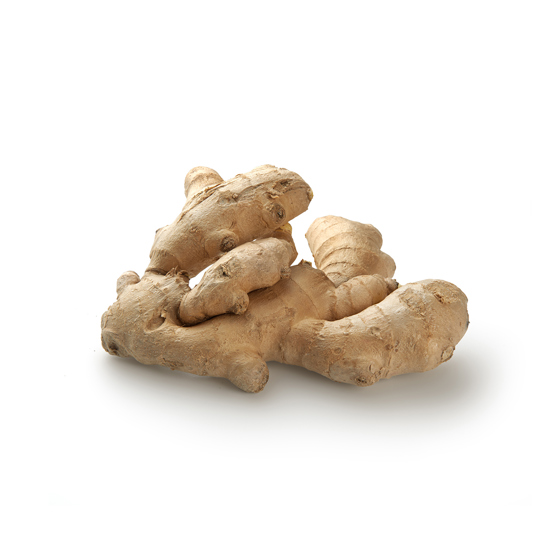Storage advice
Store fresh EAT ME ginger outside the fridge.
The root with 1001 applications

Ginger needs almost no introduction. Ginger may well come from a distance (China is a major producer), this irregularly shaped root is a huge favourite in Western Europe. And given the amazing versatility of ginger, that's hardly surprising. You'll find ginger in oven and wok dishes. And ginger tea has a prominent place on the menu at every trendy café or restaurant.
The plant that produces this delicious tuber is a reed-like perennial. The oddly shaped tubers grow under the ground. This produces tubers in all kinds of shapes and sizes, but always with the same characteristic beige to pale brown colour. Ginger can have both a soft and rough texture. Its taste is immediately recognisable and unique. Fresh EAT ME ginger has a taste that hovers between spicy and sweet. Ginger is widely used in virtually all dishes in Chinese cuisine. In India, ginger is used to enhance the flavour of curries. Dried ginger has a sharper, more pungent taste, so if you prefer mild choose fresh ginger.
A hint of warmth in a ginger cake, a taste sensation in coconut soup or an unexpected addition to a summer salad with mango: The list of uses for ginger in the kitchen is almost unlimited. Or make a cup of ginger tea and spend some time discovering new recipes!
Peel the ginger before chopping or slicing it. Are you going to grate the ginger? In this case, there is no need to peel it. Ginger can be cooked or stir-fried, added to a salad or to oven dishes.


Store fresh EAT ME ginger outside the fridge.
Ginger contains a few important minerals, such as potassium and copper. Potassium is known to be good for the muscles, copper is known to promote the normal pigmentation of the hair and skin.
Ginger has traditionally been grown for centuries in China, but it is also grown in Thailand, Brazil and Peru. Ginger seeds are sown which develop into a reed-like plant. To protect them from the scorching sun, the plants are shaded with screens. After the harvest, ginger roots are left in cold stores for 1-2 months to allow the delicate skin to become firmer. Once the skin is dry enough, the roots are shipped to their destination.
